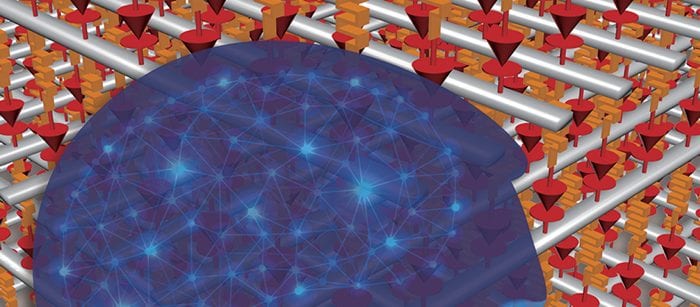Neuromorphic or synaptic computing as a new paradigm of computer architecture was first put forward in the 1970s. Jeong et al. argue in their recent review in Advanced Electronic Materials, that advances in material science, particularly the recent leaps in memristor research, have shown it is possible to use this new paradigm to produce the computing platform of the next decades.
Neuromorphic computing is made yet more compelling in view of the surge in digital data over the past 2 decades and its astonishing predicted growth in the near term. Experts estimate that data produced and stored will grow from approximately 4.4 zettabytes today to 44 zettabytes by 2020 and will reach approximately 1028 Bytes by 2040. The energy required to store the data by then will have far exceeded (by a factor of 100) what humanity can reasonably expect to produce. A new paradigm for storing and processing information is therefore urgently needed.
Jeong and co-workers argue that 3 strategies are possible to solve this problem: i) decrease the energy consumed by every compute cycle, ii) eliminate data volatility such that no power is needed to store information and iii) decrease the number of computing steps.
The historical method of choice to reduce the energy consumed per computation through scaling is unfortunately rapidly approaching fundamental physical limits. The review discusses how recent development in materials and computer science as well as mathematics might lead us out of this impasse by relying on the emergent concept of neuromorphic (or cognitive) computing.
The recent explosion in Artificial Intelligence and Machine Learning has been largely fueled by the voracious need to process ever-increasing amounts of data. This has so far mostly been done by emulating cognitive processes via software (neural networks, deep learning, etc. …).
With True North chip, IBM have taken a first step towards an in-silico approach, but Jeong et al. argue that a change in paradigm away from the CPU+Memory approach and towards a materials approach which mimics biological neurons as synapses is needed. They also discuss how the memristor may be used to develop a circuit architecture that resembles that of a brain, which may lead to efficiency gains of several orders in magnitude.

















